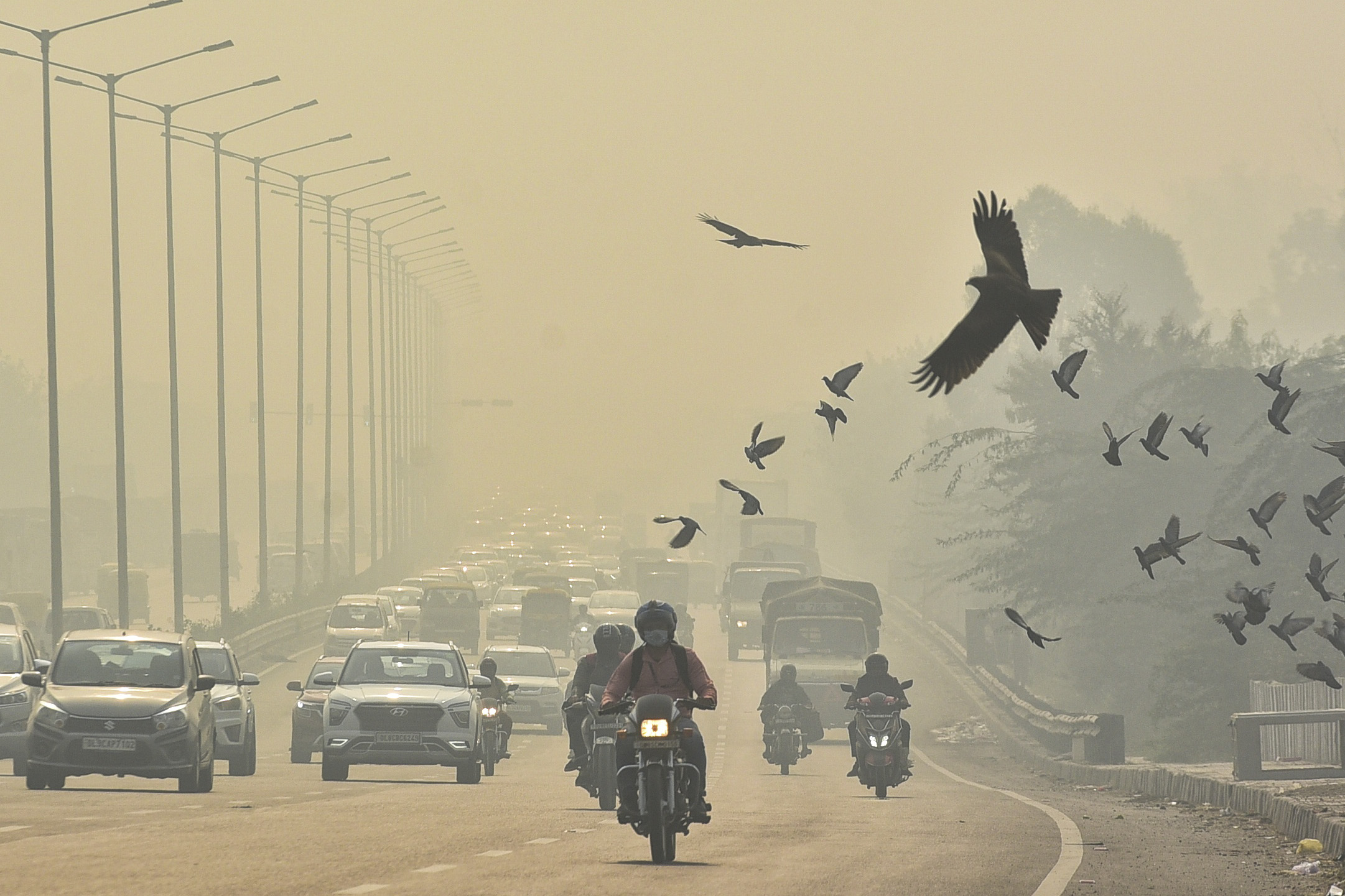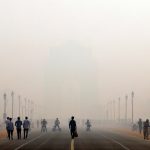Toxic air forces a ‘pollution lockdown’ in Delhi
In India’s capital city power plants and schools were closed, transport limited and a work-from-home mandate issued as air quality reached levels deemed hazardous.
Author:
7 December 2021

Delhi has been engulfed in a shroud of smog for the past few weeks. The air pollution has become so severe in India’s capital city that schools have been closed indefinitely, and work-from-home guidelines were implemented in the nation’s first pollution lockdown.
In November, toxic air pollutants linked to coal-fired power plants, car emissions and crop burning reached levels 20 times higher than those considered healthy by the World Health Organization (WHO). Delhi residents did not experience even one day of good air quality that month. October had relatively cleaner air, with no “severe” or “very poor” air quality days, as delayed monsoon withdrawal brought rain to the city.
With 20 million inhabitants, Delhi is ranked among the world’s most polluted cities. A drop in wind in October and November means air quality worsens towards the end of the year. An air quality index (AQI) between 0 and 50 is considered good, while between 301 and 400 is very poor, and 401 and 500 severe. The safe limit specified by the WHO is below 25, with anything above deemed harmful to health. November’s average AQI in Delhi this year was 376, making it the most toxic month in the past seven years. A total of 11 days in November recorded severe pollution on the central pollution control board monitors, the pollution watchdog.
Related article:
According to the watchdog’s data, the figure for the corresponding period in 2020 was 327, while 2019 had an average AQI of 312. Research by a Delhi-based policy research institute found the city’s air quality in 2020 was worse than in 2019, despite the lockdown. Delhi residents were exposed to air that did not meet the national ambient air quality standards (60 micrograms per cubic metre of air) for more than half of 2020, notwithstanding the slowdown in industrial activity and fewer cars being on the road for close to eight months (between March and November).
Air pollution reached hazardous levels this year a day after Diwali on 5 November, when most locations in Delhi recorded an AQI above 500, the highest level on the scale. This was exacerbated by a spike in the burning of crop waste in surrounding farmlands.
A public interest petition was filed at India’s Supreme Court seeking protection for the “right to breathe”. The apex court scolded authorities for their inability to stop pollution and ordered the central government to initiate measures to improve air quality.
Related article:
Subsequently, the Delhi government ordered schools to close till 28 November, suspended non-essential traffic, halted construction projects and closed six of 11 coal-fired plants until the end of November. Civil servants were also directed to work from home. As part of its efforts to combat pollution, the state government hired an extra 700 buses to encourage people to use public transport. After four days of school reopenings, the Delhi government on 2 December directed closure of all educational institutions till further orders on account of continuing high pollution levels.
The Delhi government extended the ban on the entry of heavy petrol and diesel vehicles into the national capital on 30 November till 7 December and continued to restrict construction and demolition work in the state. The ban on construction activity was briefly lifted on 22 November but reimposed by the Supreme Court on 24 November.
But Delhi’s environment minister Gopal Rai said the air quality was not expected to drop below the “very poor” category unless the city gets rain in the first week of December. According to the System of Air Quality and Weather Forecasting and Research, while the AQI in Delhi is projected to improve in December, the quality of the air would likely remain in the “very poor” category.
The cause
Delhi’s smog is the outcome of an existing urban air pollution problem coming from a host of factors, including vehicle and industrial pollution, farmers burning agricultural waste, dust from roads and construction sites, and coal power plants. Diwali fireworks and a change in weather patterns have also contributed.
The air pollution problem is not restricted to Delhi and its adjacent areas. It is a chronic issue in north Indian states, including Haryana, Punjab and Uttar Pradesh. In the wake of worsening air quality, these states have also recently imposed work-from-home orders. The Uttar Pradesh government ordered that people use public transport rather than cars and for the ban on the burning of crop waste to be enforced.
Related article:
Every year, during the post-monsoon autumn season in October and November, wheat and rice farmers in India’s northern states burn the leftover crops in their fields to prepare for ploughing and replanting. This practice was outlawed in 2015, but enforcement remains ineffective. Though smoke from this tradition spreads far and wide, the central government recently told the Supreme Court that the burning of farm waste is responsible for no more than 10% of pollution in Delhi.
Several states have also prohibited the sale and use of fireworks during the Hindu festival of Diwali. According to a 2018 report, Diwali fireworks have a “small but statistically significant” impact on pollution levels.
The Indian Supreme Court also sought a response on 29 November from the central government to the allegation that construction works for the Central Vista Redevelopment Project was a major cause of pollution. The $2.8 billion project under way in the heart of Delhi includes the construction of a new triangular-shaped Parliament building, a residential complex to house the prime minister and the vice president, and the refurbishment and construction of bureaucratic and security office buildings for the federal government.
Dying to breathe
In India, air pollution has become a seasonal phenomenon, resulting in about 1.7 million deaths each year. One study found it causes up to 30% of all fatalities in the country. Studies have shown that exposure to high levels of particulate matter – which are the tiny particles that reduce visibility and create the hazy look of smog – causes respiratory and cardiovascular disease and that air-related diseases, such as lung disease, cancer, respiratory failure, asthma and strokes, are on the rise. Healthy people who spend too long outdoors often experience watering eyes, sore throats, coughing, difficulty breathing and headaches.
According to a Greenpeace analysis, toxic air claimed approximately 54 000 lives in India’s national capital in 2020. The fatalities are equally worrying in other Indian cities. “An estimated 25 000 avoidable deaths in Mumbai in 2020 have been attributed to air pollution. Bengaluru, Chennai, Hyderabad and Lucknow estimated an approximate 12 000, 11 000, 11 000 and 6 700 avoidable deaths respectively due to polluted air,” it added.
Related article:
A September 2021 report by a US research group noted that an estimated 480 million people in northern India face the “most extreme levels of air pollution in the world”, which could reduce the life expectancy of Indians by nine years. It added that north India “breathes pollution levels that are 10 times worse than those found anywhere else in the world”.
India’s Ministry of Environment, Forest and Climate Change launched the National Clean Air Programme in January 2019. This was supposed to prepare clean air action plans with an objective to reduce particulate matter pollution by 20% to 30% by 2024 as compared to 2017 in 122 cities across the country. The dividends of this initiative are yet to show results.




